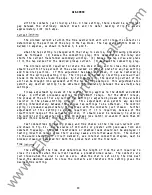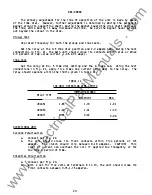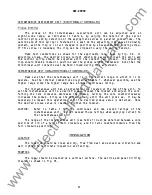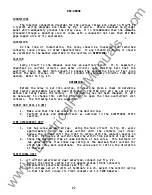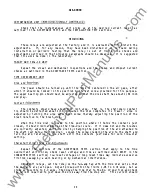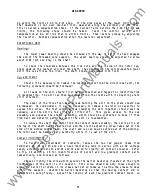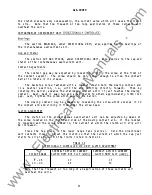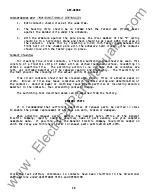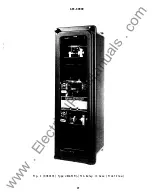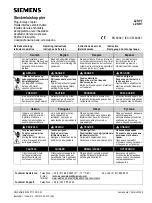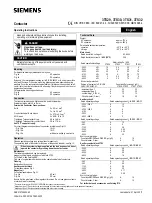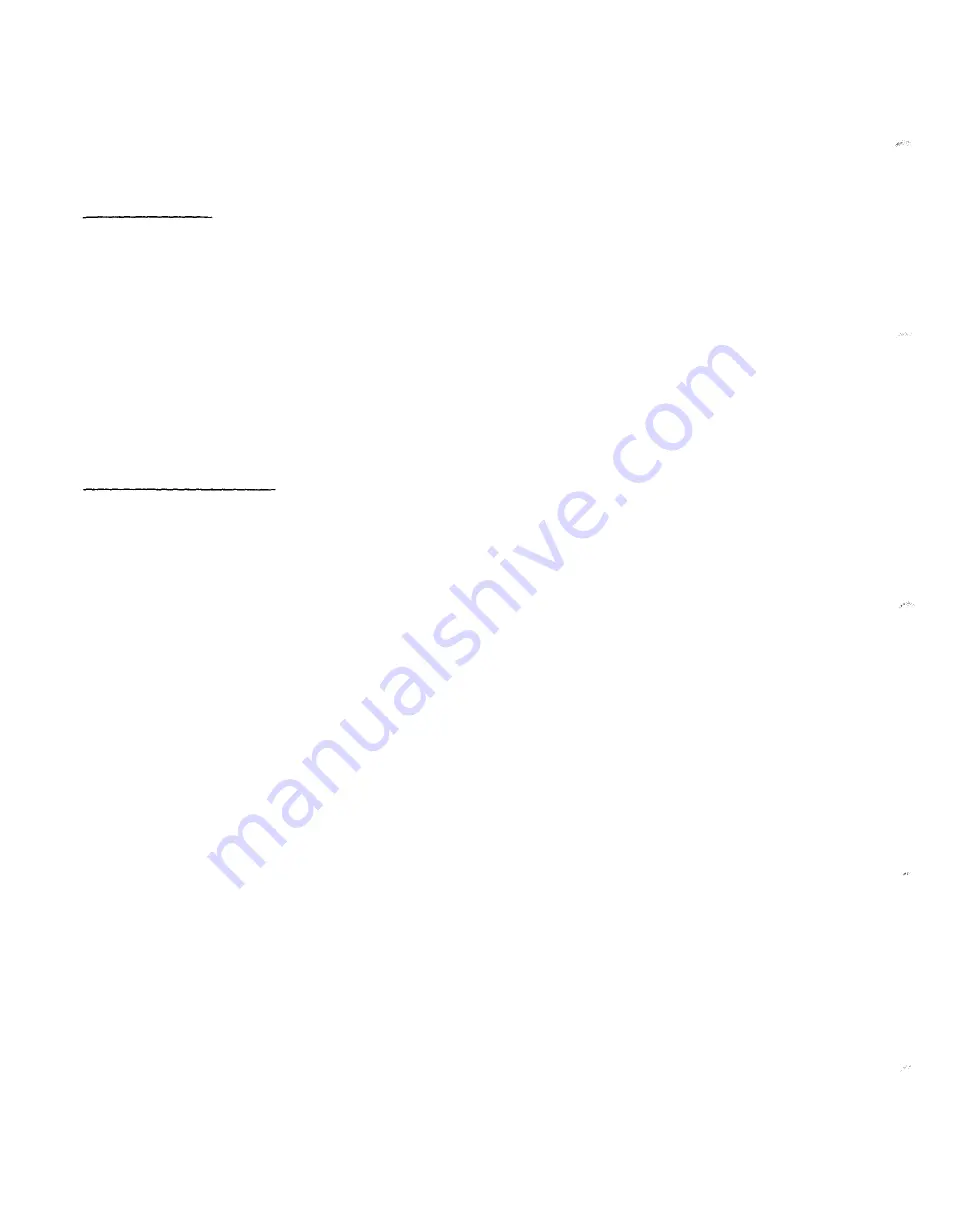
G EK-49849
i nner face of the stat i onary contact brush ret ai ner ( H ) .
The stat i on ary contact
support (K ) and the contact d i al are as sembled together by means of a mount i ng screw
( L ) and two l ock-nuts ( M ) .
B arrel Contact
The d i rect i onal un i t contacts ( r i ght rear ) whi ch control the i n stantaneous
overcurrent un i t, are shown i n F i g.
19.
They are spec i al l y constructed to s uppres s
bounci ng.
The stat i onary contact ( G ) i s mounted on a fl at spi ral spr i ng ( F ) backed
up by a thi n d i aphragm (C ) . These are both mounted i n a s l i ght l y i nc l i ned tube (A ) .
A stai n l es s steel bal l ( B ) i s p l aced i n the tube before the d i aphragm i s as s embl ed.
When the mov i ng contact hi ts the stat i onary contact, the energy of the former i s
i mparted to the latter and thence to the bal l , whi ch i s free to rol l up the i nc l i ned
tube.
Thus the mov i ng contact comes to rest wi th substant i al l y no rebound or
v i brat i on.
To change the stat i onary contact mount i ng spri ng, remove the contact
barre l and s l eeve as a comp l ete un i t aft er l oos en i ng the screw at the front of the
contact bl ock.
Un screw the cap ( E ) .
The contact and i ts fl at spi ral mount i ng
spr i ng may then be removed.
TIME OVERCURRENT UNIT
The i nverse t i me and very i nverse t ime overcurrent un i t s cons i s t of a tapped
current operat i ng coi
1
wound on a U-magnet i ron structure.
The t apped operat i ng
coi l i s connected to taps on the tap bl ock.
The U-magnet contai ns wound shad i ng
coi l s whi ch are connected i n ser i es wi th a d i rect i onal un i t contact.
When power
f l ow i s i n such a d i rect i on as to c l ose the d i rect i onal un i t contacts, the shad i ng
coi l s act to produce a s p l i t-phas e fi e l d whi ch, i n turn, devel ops tor que on the
operat i ng d i sk.
The extreme l y i nverse t i me overcurrent un i t i s of the wattmetri c type s i mi l ar
to that used i n watt hour meters except as fo
1 1
ows : the upper port i on of the i ron
structure has two concentr i c wi ndi ngs on the m i dd l e l eg of the magnet i c c i rcui t.
One of these i s a tapped current wi n d i ng connected to taps on the tap bl ock; the
other i s a fl oat i ng wi nd i ng whi ch i s connected i n ser i es wi th the d i rect i on al un i t
contact s, a res i stor,
a capacitor and
the two coils on the l ower l egs of the
magnet i c c i rcui t. When power fl ow i s i n such a d i rect i on as to c l ose a d i rect i onal
un i t contact, the unit devel ops torque on the operat i ng d i sk.
The d i sk s haft carr i es the mov i ng contact whi ch comp l etes the tr i p ci rcui t when
i t touches the stat i onary cont act or contact s. The shaft i s restrai ned by a spi ral
s pr i n g to gi ve the proper contact-c l os i ng current, and i ts mot i on i s retarded by a
permanent magnet act i ng on the d i s k to produce the des i red t i me character i s t i c. The
var i abl e retard i ng force resul t i ng from
the grad i ent of the spi ral spr i ng i s
compensated by the s p i ral shape of the i nduct i on d i sk, whi ch resu l t s i n an i ncreased
dr i v i ng force as the spr i ng wi nds up.
The torque control ci rcui ts of both the t i me overcurrent and i nstantaneous
overcurrent un i ts are wi red to term i nal s on the rel ay contact bl ock.
These
term i nal s are shorted together by i nternal l y connected red jumper l eads when the
rel ays l eave the factory ( see F i g.
5
to
7
i nc l us i ve ) . If extern al torque control i s
des i red, these jumper l eads shoul d be removed.
14
www
. ElectricalPartManuals
. com



















